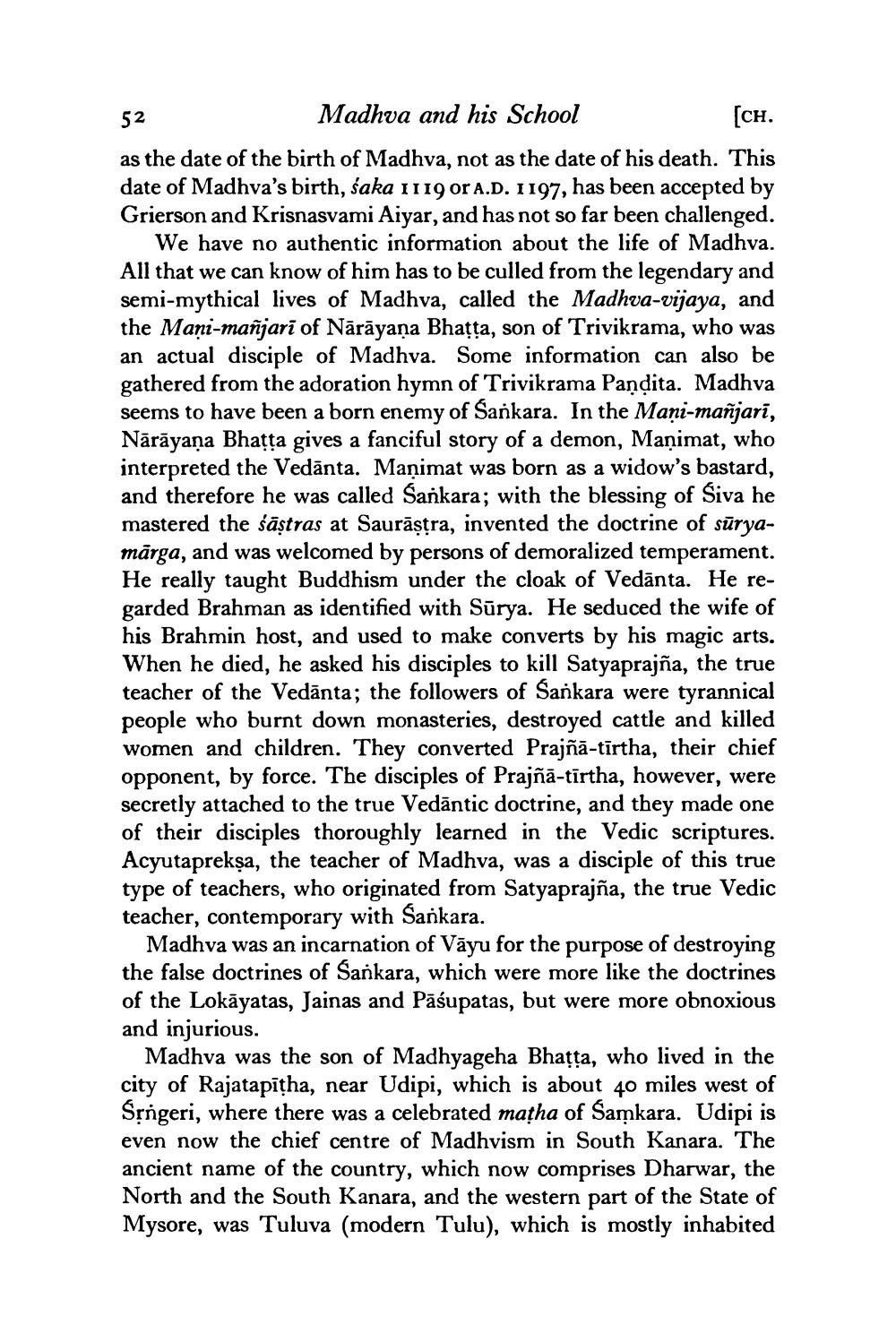________________
52 Madhva and his School
[CH. as the date of the birth of Madhva, not as the date of his death. This date of Madhva's birth, saka 1119 or A.D. 1197, has been accepted by Grierson and Krisnasvami Aiyar, and has not so far been challenged.
We have no authentic information about the life of Madhva. All that we can know of him has to be culled from the legendary and semi-mythical lives of Madhva, called the Madhva-vijaya, and the Maņi-mañjarī of Nārāyaṇa Bhatta, son of Trivikrama, who was an actual disciple of Madhva. Some information can also be gathered from the adoration hymn of Trivikrama Pandita. Madhva seems to have been a born enemy of Sankara. In the Mani-mañjari, Nārāyaṇa Bhatta gives a fanciful story of a demon, Manimat, who interpreted the Vedānta. Manimat was born as a widow's bastard, and therefore he was called Sankara; with the blessing of Siva he mastered the śāstras at Saurāstra, invented the doctrine of sūryamärga, and was welcomed by persons of demoralized temperament. He really taught Buddhism under the cloak of Vedānta. He regarded Brahman as identified with Sūrya. He seduced the wife of his Brahmin host, and used to make converts by his magic arts. When he died, he asked his disciples to kill Satyaprajña, the true teacher of the Vedānta; the followers of Sankara were tyrannical people who burnt down monasteries, destroyed cattle and killed women and children. They converted Prajñā-tīrtha, their chief opponent, by force. The disciples of Prajñā-tīrtha, however, were secretly attached to the true Vedāntic doctrine, and they made one of their disciples thoroughly learned in the Vedic scriptures. Acyutapreksa, the teacher of Madhva, was a disciple of this true type of teachers, who originated from Satyaprajña, the true Vedic teacher, contemporary with Sankara.
Madhva was an incarnation of Vāyu for the purpose of destroying the false doctrines of Sankara, which were more like the doctrines of the Lokāyatas, Jainas and Pāśupatas, but were more obnoxious and injurious.
Madhva was the son of Madhyageha Bhatta, who lived in the city of Rajatapītha, near Udipi, which is about 40 miles west of Sủngeri, where there was a celebrated matha of Samkara. Udipi is even now the chief centre of Madhvism in South Kanara. The ancient name of the country, which now comprises Dharwar, the North and the South Kanara, and the western part of the State of Mysore, was Tuluva (modern Tulu), which is mostly inhabited




